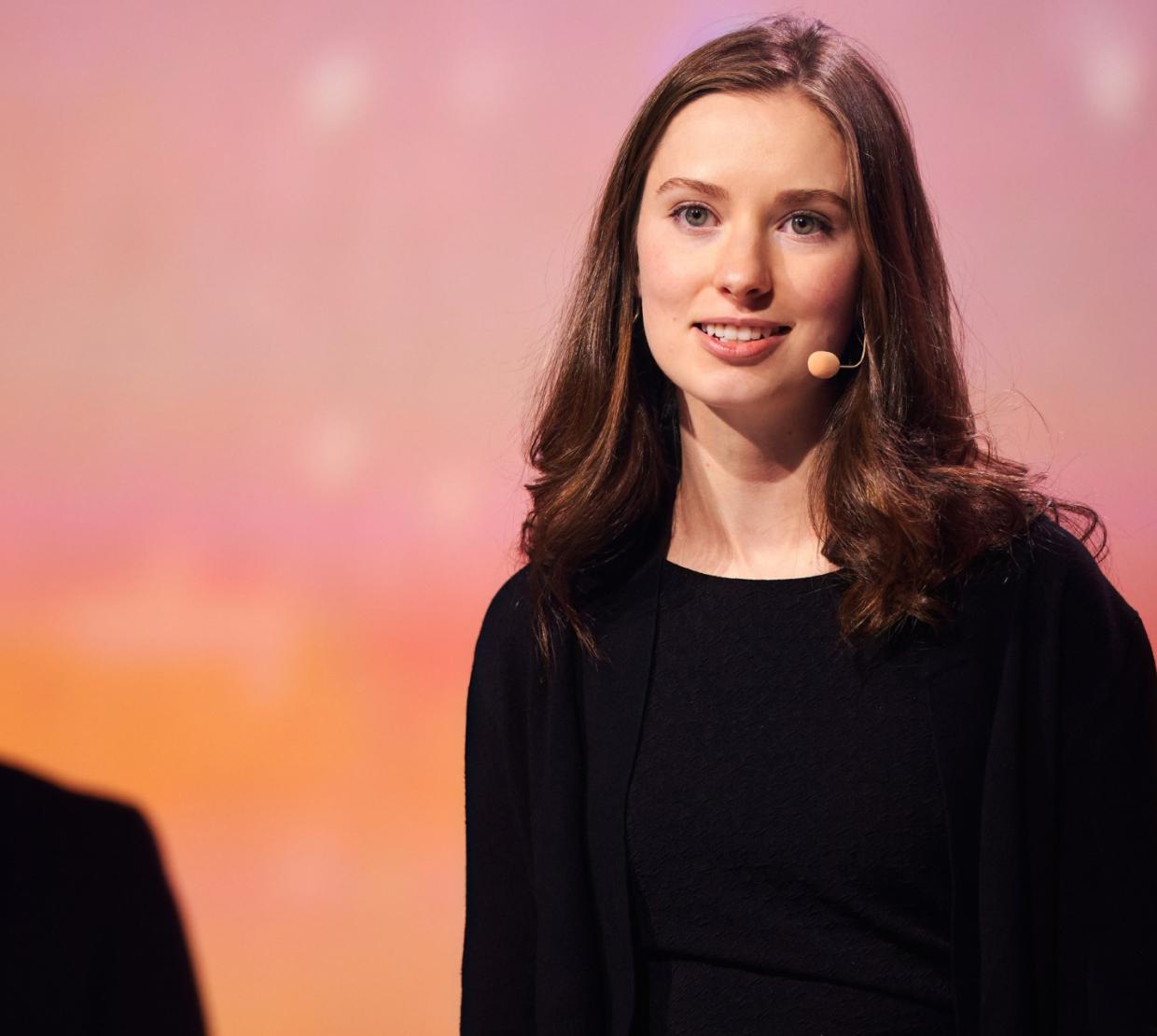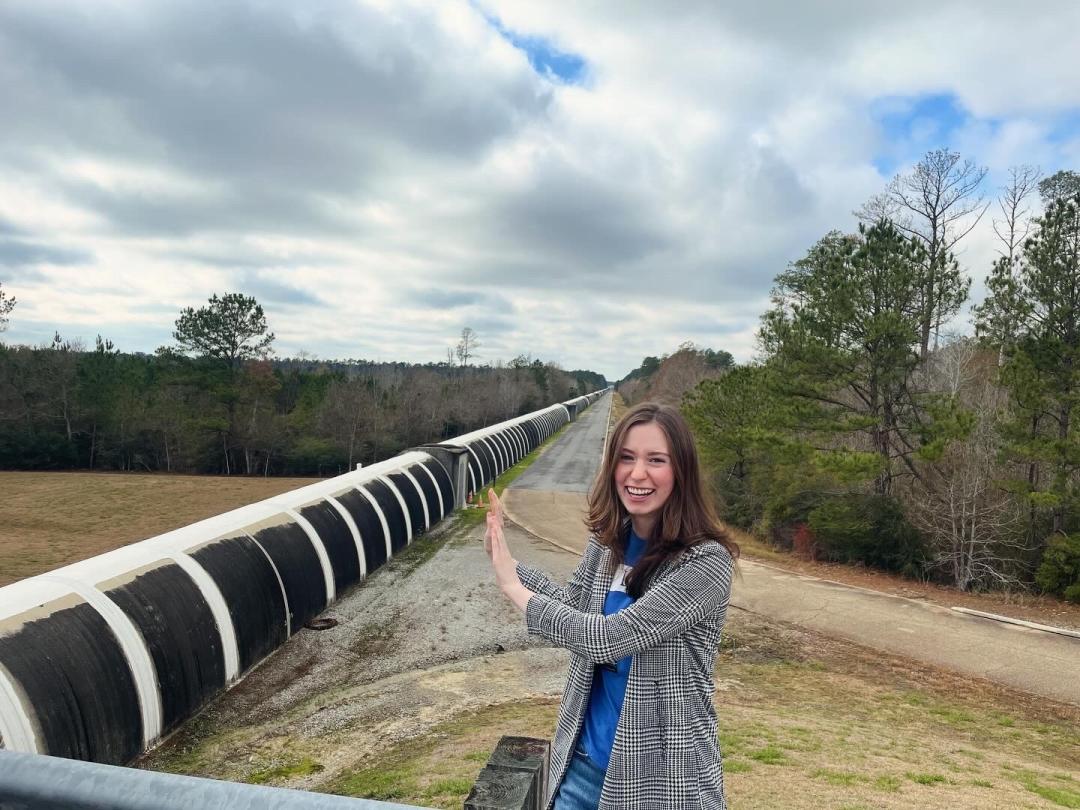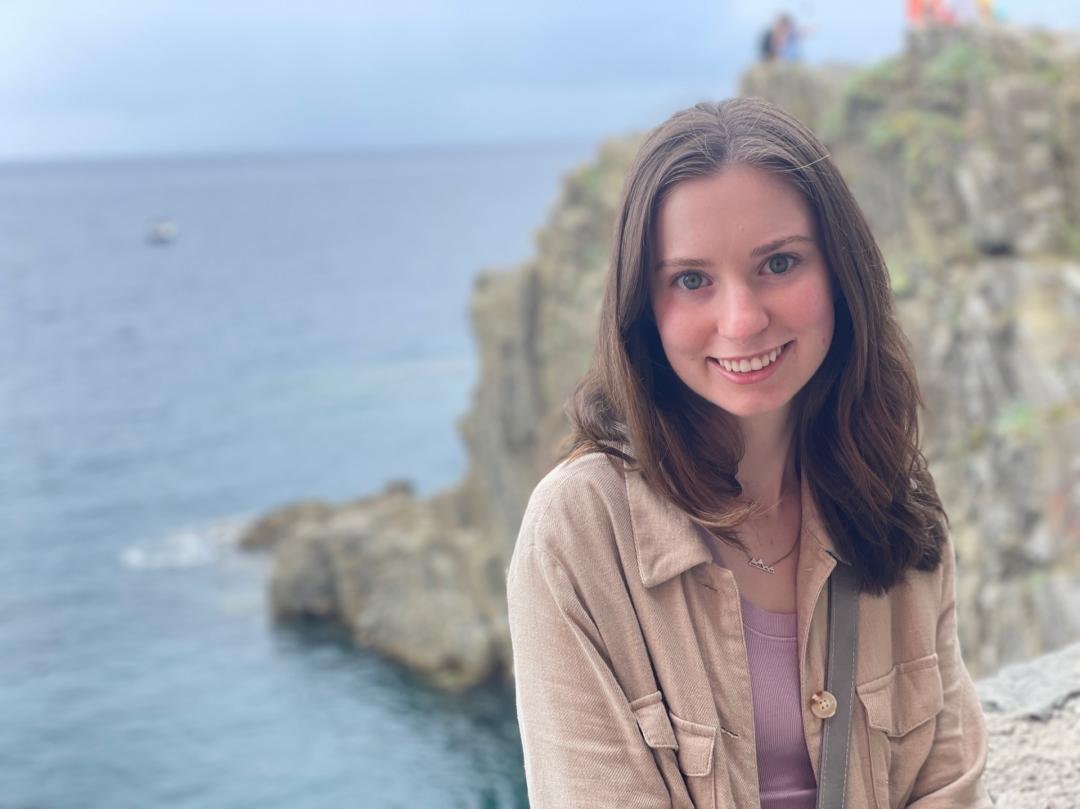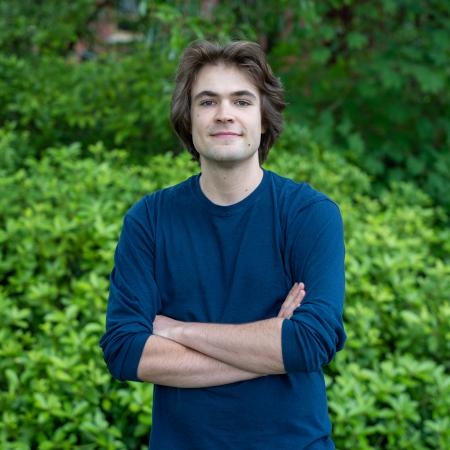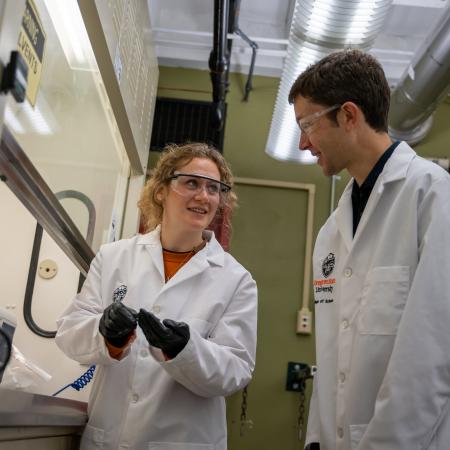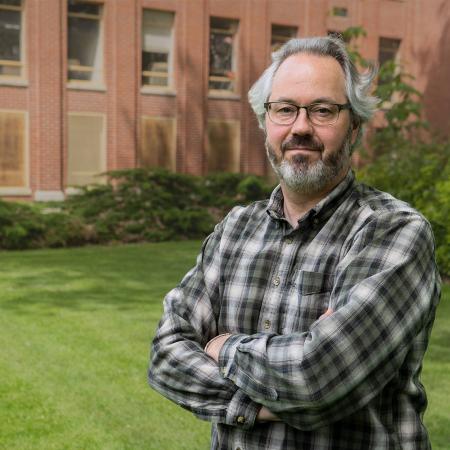To picture a black hole is to picture violence: Stars are mangled, planets are ground to dust, and time itself is wrung out and slowed by these super-sized whirlpools of gravity. They are immense, indiscriminate and the ultimate destroyers of the universe. Then they merge.
One such turbulent event is what Honors College physics senior Phia Morton spent last summer studying in Pisa, Italy. She returned to Oregon State as the first author of a paper correlating the merger with two different signals — a flare and a gravitational wave — making it the first strongly supported instance of a black hole merger emitting light. This discovery not only deepens our understanding of these astronomical objects but can also provide a new lens to view the gradual stretch of the universe.
“Any time you take on a research project, you’re going to be full of questions and uncertainties,” Morton said. “Research is nice because it’s about the journey, not the destination. You’re doing something new, something that hasn’t been done before.”
Morton was able to present her work at the Conference for Undergraduate Women in Physics at Stanford University, where she will pursue a Ph.D. this fall. She also presented at the American Astronomical Society conference in New Orleans this past January. With the infinite realm of the cosmos as a muse, new discoveries are the beating heart of astrophysics that continues to pull her in.
The ripple before the flare
Morton’s journey with black holes began amidst the similarly chaotic pandemic. A first-year student at Oregon State, she sought out ways to connect with the physics department in a time of isolation. Her search led her to Xavier Siemens, a physics professor and co-director of the NANOGrav Physics Frontier Center.
NANOGrav, the North American Nanohertz Observatory for Gravitational Waves, recently released nearly two decades’ worth of research to international acclaim. Its work upheld the existence of low-frequency gravitational waves and enhanced current knowledge of how cosmic structures are pieced together. With several Oregon State scientists leading the project, Morton was able to reach out and work alongside groundbreaking researchers during this process.
“NANOGrav has been super supportive of everything that I’ve done here at OSU and elsewhere,” she said.
The foundational knowledge of gravitational waves she gained from NANOGrav was critical to working on the black hole merger. Gravity is more than what made the apple fall — it moves as invisible waves across the universe, wrinkling and stretching space itself. As Morton explains, spacetime (the fabric of space) can be described as a flat trampoline. When a heavy object is set in the middle of the trampoline, the fabric warps inward like a funnel. If two heavy objects are placed on the mat, they circle each other down this funnel, sending out ripples onto the trampoline as they move. Gravitational waves are these ripples in space. In the case of Morton’s research, the objects are two black holes with one inevitable destination at the funnel’s end: each other.
